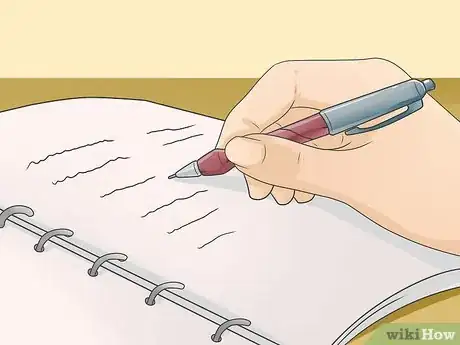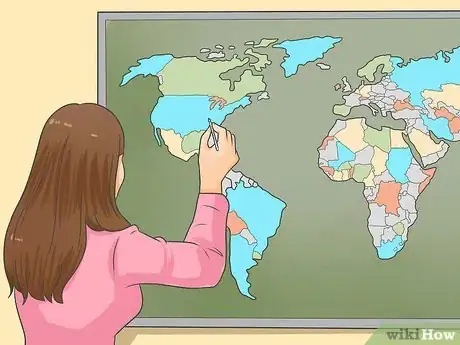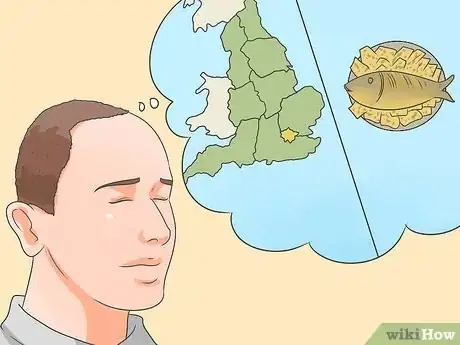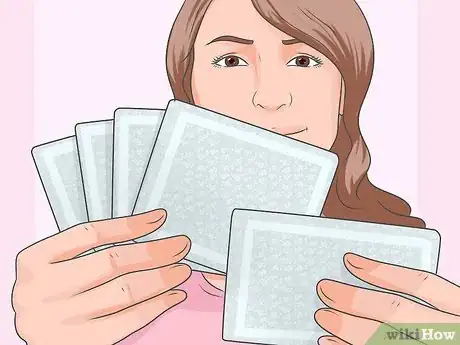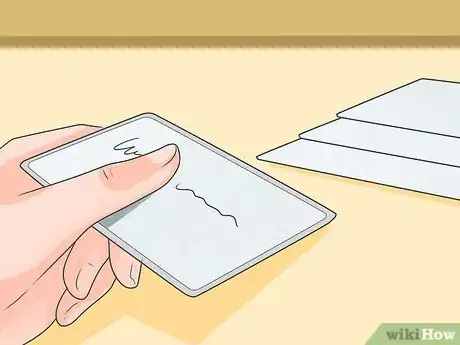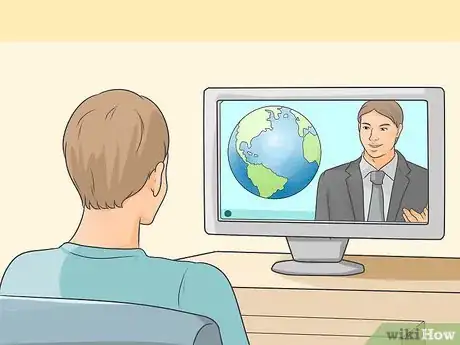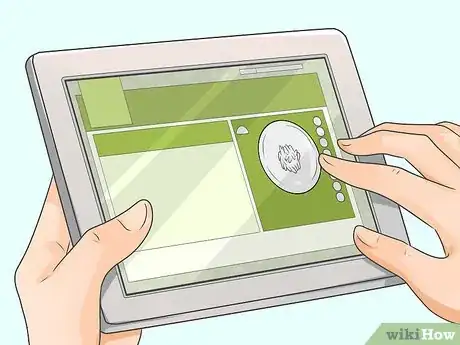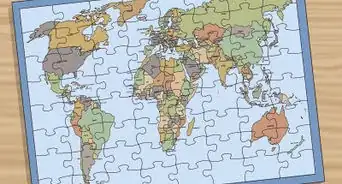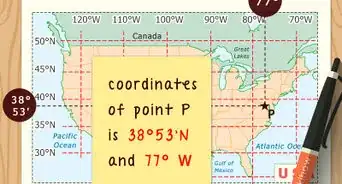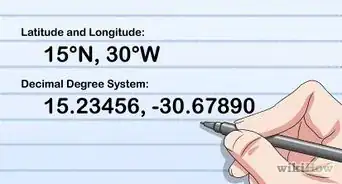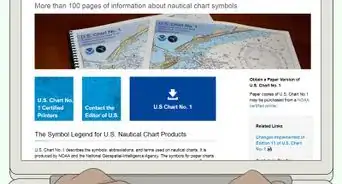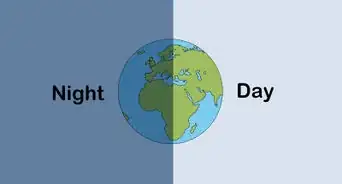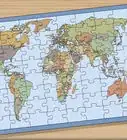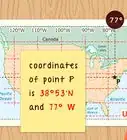X
wikiHow is a “wiki,” similar to Wikipedia, which means that many of our articles are co-written by multiple authors. To create this article, 16 people, some anonymous, worked to edit and improve it over time.
There are 13 references cited in this article, which can be found at the bottom of the page.
This article has been viewed 74,623 times.
Learn more...
Learning the world capitals may seem like a daunting task with so many to learn. However, you can commit them to memory with a few tricks, such as using mnemonic devices, songs, and games. Also, don't forget to review the capitals once you've learned them so that the information actually sticks in your brain.
Steps
Part 1
Part 1 of 4:
Finding the Information
-
1Find the information. Pick a reputable book or website that list the capitals. You'll need the information to learn the capitals later on.[1]
- The most reputable sources are educational sources and government sources. Look for ".edu" and ".gov" at the end of the links. One source, run by the U.S. government, is the CIA World Factbook.[2]
- A website that is updated often may be better, as countries do change over time.
- You can also use a world map.
-
2Print or copy the information. To learn this information, you will need it available to you. You can also just keep on a screen nearby, as long as you don't get distracted by the internet. You want to focus on studying, not on social media.Advertisement
-
3Try writing it out by hand. Though writing out the capitals and countries by hand sounds tedious, it's actually a way to learn the information. In fact, writing them out over and over will reinforce the information in your mind. In addition, you'll have a copy of the information to use for review.[3]
Advertisement
Part 2
Part 2 of 4:
Engaging in Learning
-
1Learn facts about the capitals. Just memorizing a list of capital names and countries is not that interesting. However, you may find learning about the culture, history, geography, or people more interesting. Therefore, as you try to learn the capitals, also look up facts about the area to help you remember.
- For instance, learning that Rome is the capital of Italy may not be that interesting to you. However, you might be more interested to learn that Rome contains a whole country inside the capital, the Vatican. The Vatican, which is the head of the Catholic Church, is officially its own country.[4]
- As another example, you might find it interesting to note that the capital of Mexico, Mexico City, was once a large lake. It began as city on an island built by the Aztecs that spread out across the lake, which was eventually conquered. The current city was built on top of the rubble from the original city, and the water was drained to other areas.[5]
-
2Use visual aids. Using visual cues to aid your learning is a tried-and-true method. Fortunately, with something geographical like world capitals, you've got the visual aids built right in.[6]
- Try printing off a blank map of the world, and write in the capitals and country names while looking at another map. Color in the map to help your visual memory. You can also draw in details related to the country, such as adding a picture of the country's flag or national flower.
- Next, try filling in a new map without looking at another map.
-
3Try a mnemonic device. Mnemonic devices are tricks to help you remember or learn something. For instance, say you wanted to remember to get bananas, beef, and flour at the store. You might try visualizing a cow eating a banana with a sack of flour balanced on his head. More appropriately for world capitals, try making a visual map in your head, also known as the Method of Loci.[7]
- With this mnemonic device, you imagine a place you know and visualize items in that place. The items help you remember what you need to. If this method sounds good to you, try visualizing an item that reminds you of the capital and country. For instance, for London, England, you might think of a plate of fish and chips.[8]
- However, for world capitals, it might be better to imagine a world map. Visualize a world map in your head, large enough that you can stomp from country to country in one step. As you walk through the world, visualize the capital and name of each country.[9]
-
4Use a rhyme or song. Rhymes and rhythms help things stick in your memory. That's why nursery rhymes and kids' songs are so easy to remember.[10]
Advertisement
Part 3
Part 3 of 4:
Using Word Tricks
-
1Use spelling tricks. For example, the capital of Ecuador is just "taquito" without the "ta" at the beginning. That makes "Quito"! The capital of France is the word "pairs" with the "r" and "I" swapped. That makes "Paris"!
-
2Create phrases that are close to the capital cities in spelling. Use these phrases to memorize the capitals.
- The capital of Portugal is the phrase "no basil" spelled backwards without the space between "no" and "basil", and without the "a" in the word "basil". That makes "Lisbon"!
- Another example: to find the capital of Armenia, you can use the phrase "yer van", which means "your van". Then, add an "e" in the middle and remove the spaces. Now you have "Yerevan!"
-
3Use homophone tricks. Try to find a homophone for as many capital cities as you can. For example, the capital of Taiwan is Taipei. Taipei is a homophone of the personality type "Type A".
Advertisement
Part 4
Part 4 of 4:
Reinforcing What You Learned
-
1Have your friends quiz you. Studying with friends can make study time more fun and engaging, as long as you stay mostly on topic. Have your friends quiz you by asking you what world capital belongs with what country.[13]
-
2Try making flashcards. Put the capital on one side and the country on the other side. Go through the stack, trying to remember the other side without looking. Try to come up with the answer before you peek.[16]
-
3Make a match-up game. Write the name of a capital on one card and the name of the country on another. Repeat until you have all the capitals and countries on individual cards. Lay them face down on a table. Turn one over, and turn another one over. Only keep the set if the country and capital match up. You can play by yourself or against another person.
-
4Watch world news. World news often talks about the capitals of other countries. You'll be more informed overall, but you'll also start picking up on facts about the capitals. You'll associate the capitals with real people and real events, which will help you remember them. However, if you're under 18, make sure to ask your parents if it's okay for you to watch, as news channels can be graphic.
-
5Play geography games. Geography board games or online games can reinforce what you've learned. In addition, they make learning more fun, so you won't get as bored as easily.[17]
-
6Keep reviewing. If you don't review what you've learned, you'll gradually lose it. If you don't want to forget your world capitals, continue to go over the material so it sticks with you.[20]
Advertisement
Community Q&A
-
QuestionI can't remember the Asian countries because of their similar names?
 Community AnswerDownload or print out a map. Print out a table with the names of Asian countries and their capitals. Pin these up where you can see them often. If you type keywords online like, "Asian countries and their capitals" you'll find such a list and maps in the results. Watch a YouTube video that talks about Asian countries and capitals. That way you can hear their names spoken, which will help you to recollect them better. Download MP3 files about Asian countries. All these tools are usually available online for reference.
Community AnswerDownload or print out a map. Print out a table with the names of Asian countries and their capitals. Pin these up where you can see them often. If you type keywords online like, "Asian countries and their capitals" you'll find such a list and maps in the results. Watch a YouTube video that talks about Asian countries and capitals. That way you can hear their names spoken, which will help you to recollect them better. Download MP3 files about Asian countries. All these tools are usually available online for reference. -
QuestionHow can we learn flags and countries and their capitals quickly?
 Community AnswerThe more you want to learn, the sooner you will learn. Learn all you can about the flags, countries and capitals. Read up on the reason why their flag is colored that way. This will lead you into the history of the country, which will help you remember the capital better, along with the flag's design and colours.
Community AnswerThe more you want to learn, the sooner you will learn. Learn all you can about the flags, countries and capitals. Read up on the reason why their flag is colored that way. This will lead you into the history of the country, which will help you remember the capital better, along with the flag's design and colours.
Advertisement
References
- ↑ https://www.nationsonline.org/oneworld/countries_of_the_world.htm
- ↑ https://www.utep.edu/extendeduniversity/utepconnect/blog/march-2017/4-ways-to-differentiate-a-good-source-from-a-bad-source.html
- ↑ https://learningcenter.unc.edu/tips-and-tools/enhancing-your-memory/
- ↑ http://www.eupedia.com/italy/trivia.shtml
- ↑ https://education.nationalgeographic.org/resource/tenochtitlan/
- ↑ https://learningcenter.unc.edu/tips-and-tools/enhancing-your-memory/
- ↑ http://psychcentral.com/lib/memory-and-mnemonic-devices/
- ↑ http://psychcentral.com/lib/memory-and-mnemonic-devices/
- ↑ http://psychcentral.com/lib/memory-and-mnemonic-devices/
- ↑ http://psychcentral.com/lib/memory-and-mnemonic-devices/
- ↑ http://psychcentral.com/lib/memory-and-mnemonic-devices/
- ↑ https://www.youtube.com/watch?v=DaM9YLPuy6s
- ↑ http://psychcentral.com/lib/top-10-most-effective-study-habits/?all=1
- ↑ http://psychcentral.com/lib/top-10-most-effective-study-habits/?all=1
- ↑ http://psychcentral.com/lib/top-10-most-effective-study-habits/?all=1
- ↑ https://guides.centralpenn.edu/c.php?g=695569&p=4999857
- ↑ http://www.sheppardsoftware.com/Geography.htm
- ↑ http://freerice.com/#/world-capitals/13603
- ↑ http://freerice.com/about
- ↑ https://learningcenter.unc.edu/tips-and-tools/studying-101-study-smarter-not-harder/
About This Article
Advertisement


